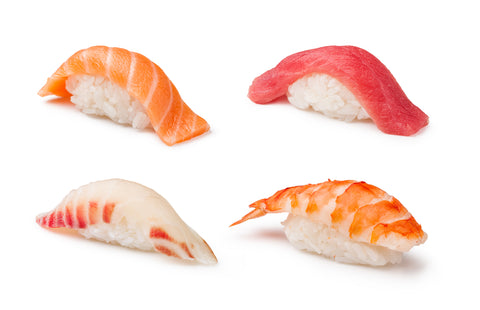Savoring the Essence of Japan: An Unforgettable Sushi Experience
Step into the delicious world of the most famous Japanese dish. This is your chance to learn everything about sushi and why it’s beloved all around the world.
Japanese Sushi: A Culinary Journey
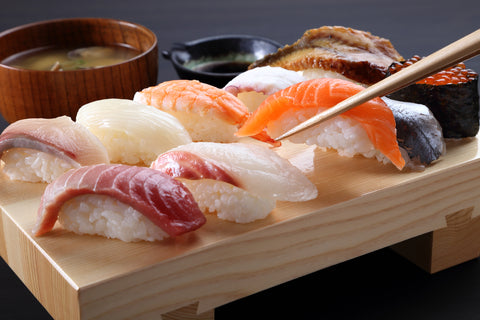
The United States alone has over 16,000 sushi restaurants. Other countries like Canada, Sweden, and Ukraine also house thousands of such establishments. The beloved culinary delight has come a long way since its humble beginnings on the streets of China. Yes, “China.” Sushi did not originate in Japan, contrary to popular belief. Japan may be its modern capital, but the dish first appeared in China.
The journey of sushi began with the practical need to preserve rice and fish in 4th-century China. There was a Chinese dish called narezushi, a combination of fermented rice and salted fish. Fermenting the rice and covering the fresh fish with salt helped preserve the food.
As explorations from Japan to Southeast Asia grew more rampant, narezushi found its way into the country around the 9th century. But if that is the case, how did sushi become so closely associated with Japan? The answer is simple: improvements. The Japanese made massive changes to the sushi-making process, including the introduction of rice vinegar for faster fermentation. They also invented various sushi styles like namanari, hayazushi, and nigirizushi. Hanaya Yohei invented the nigirizushi and served them at street stalls. He is considered by many to be the father of modern sushi.
By the end of the 18th century, thousands of popular Japanese restaurants served sushi. Today, sushi restaurants are considered cultural establishments and the chefs who work there are revered for their expertise and skills.
Immerse Yourself in Authentic Japanese Sushi: What Sets It Apart
At its core, the Japanese dish sushi contains vinegar-dressed rice, salt, sugar, vegetables, and seafood. It may also include other ingredients. The ingredients seem simple enough, yet sushi can be a complex meal to prepare. Chefs have to train and practice the art of sushi-making for several years. That is why people all over the world are ready to pay a premium for top-notch sushi. Let’s explore some of the unique characteristics of high-quality Japanese sushi.
Vinegared Sushi Rice (Sumeshi)
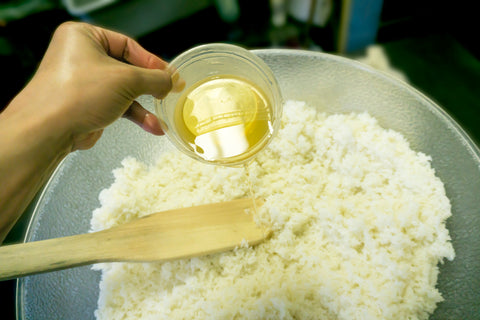
Rice may be a staple food, but it serves as the bedrock of the sushi dish. Rice is seasoned with a special vinegar mixture before being used to make sushi. This mixture consists of rice vinegar, sugar, and salt. Chefs control the acidity, sweetness, and saltiness of sushi by balancing the composition of these ingredients.
Also, the chefs have to be precise with the consistency of the authentic rice so it doesn’t crumble when you eat it. They keep it at room temperature and try to make the outer rice layer denser than the inner one by applying precise pressure while cooking.
Topping (Neta)
Although you can find sushi made with meat or vegetables, seafood is the most common type of neta. Salmon, tuna, eel, and squid are examples of seafood that are used in high-quality sushi. The vinegar-seasoned rice helps to minimize the smell of fish. Chefs also avoid making the fish too greasy. It can be eaten raw or cooked, depending on the type of sushi you want to make.
The final part of making high-quality sushi is setting the presentation to fit with the tastes of regional consumers. That’s a big reason sushi presentation in Japan is different from that in the United States.
A Visual Feast: What Does Sushi Look Like in Japan?

If you’ve only eaten sushi in Europe and the U.S., you may be in for a culinary shock when you try Japanese sushi for the first time. The presentation in Japan is a lot different but follows the same principles of simplicity as the others. The first thing you may notice with Japanese sushi is that chefs tend to pack their dishes loosely to allow you to eat them with your fingers easily. Also, these chefs are not fans of unnecessary experimentation; hence, you’ll find that most of the sushi dishes are nigiri (rice with fish) and do not contain rolls, sauces, or extra ingredients.
Another noticeable feature of Japan’s sushi presentation is the treatment of soy sauce dipping. Sushi masters strongly recommend against dousing your sushi in soy sauce, as it would upset the flavor balance. The level of freshness is also a vital consideration in the Japanese sushi space. Chefs know exactly when a fish has the most flavor, and they use several methods to preserve freshness, such as flash freezing. You may find them serving tuna that was killed a few days ago and serving other fish as soon as they’re killed. Don’t freak out if your sashimi is so fresh that it moves on your plate.
Despite the culinary craftsmanship of Japanese sushi, it's highly affordable. With only a few bucks, you can eat a sushi breakfast to your satisfaction anywhere in Japan. Just because these dishes look simple and affordable doesn’t mean they lack flavor or diversity. You’ll find a wide variety of meticulously prepared seafood dishes, ranging from fatty tuna and salmon to mackerel and shrimp. People who visit Japanese sushi bars or restaurants are always spoiled for choice.
Beyond the Basics: Exploring the Different Types of Japanese Sushi
The sushi capital of the world is home to chefs who have dedicated their lives to finding new ways to prepare sushi. It’s no surprise that the country boasts a wide variety of sushi types. Let’s explore the TOP 5 most popular ones:
1 - Nigiri: Nigiri sushi is the most popular type in Japan. It consists of cooked or raw fish served on top of vinegared sushi rice. We’ll reveal more about nigiri sushi later in the post
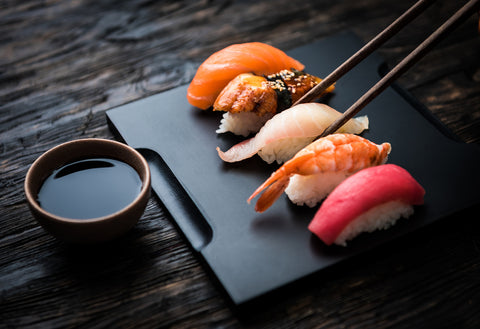
2- Maki roll or Makizushi: It is rolled sushi consisting of a seaweed sheet wrapped around a bit-sized combination of vinegared rice and other fillings. Types of maki rolls are: Hosomaki (one filling; rice), Kappamaki (two fillings; rice and cucumber), Tekkamaki (two fillings; rice and tuna), Futomaki (several fillings).
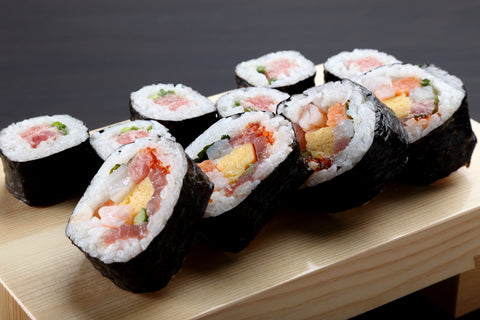
3 - Temaki or Temakizushi: Temaki is similar to maki rolls, except the seaweed sheet is hand rolled into a large cone. The fillings are fairly similar: rice, fish, and other ingredients.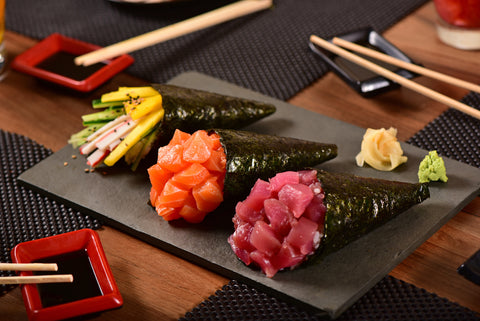
4 - Inarizushi: Inarizushi is the perfect addition to a bento box. It consists of deep-fried tofu filled with vinegared sushi rice. 
5 - Sashimi: Many people argue that sashimi is not sushi because it doesn’t contain rice. However, it is made from thinly sliced raw fish and meat such as salmon, shrimp, tuna, and yellowtail. Some versions, like freshwater eel or unagi, are cooked.

Nigiri Sushi: Mastering the Art of Hand-Pressed Delicacies
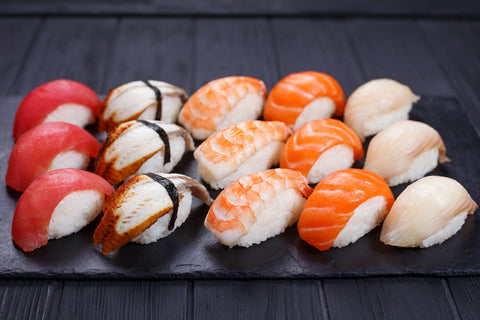
Dive into the art of nigiri sushi, bite-sized masterpieces that showcase the essence of Japanese culinary craftsmanship. Nigiri sushi is a type of sushi that consists of a top layer of fish and a bottom layer of rice. The fish is usually raw and is pressed atop an oval-shaped mound of vinegared rice. Nigirizushi translates to “hand-pressed sushi” because chefs prepare the dish using their hands. They mold sticky rice into an oval shape before pressing the fresh seafood topping against it until both layers stick together.
To further enhance the flavor of nigiri sushi, chefs often add wasabi and garnish between the fish and vinegared rice. Common fish used to make nigiri sushi are tuna, yellowtail, and salmon. All of these sushi variants sound like simple dishes but in reality, authentic sushi takes hours of dedication and passion to prepare. And that’s not all. Only a certified sushi chef can produce the standard of sushi required in Japanese restaurants.
Behind the Counter: The Role of Sushi Chefs in Japan

In Japan, a sushi chef is known as an itamae. They have a revered status within and outside the country due to their dedication to honing their skills over years of rigorous training and apprenticeship.
It takes an incredible 10 years for an apprentice to become a sushi chef. They typically start off after high school and work directly under a senior chef. Early apprenticeship begins with menial kitchen tasks like cleaning, washing, and deliveries. The apprentice is tasked with observing the chef and getting familiar with the sushi-making process. After a few years, they’re allowed to cook rice. After 10 years of training, the apprentice becomes a sushi master and can be trusted to buy ingredients at the market and make sushi for customers.
Sushi chefs are seen as artisans. They are constantly learning new sushi-making techniques and passing them down to the next generation of chefs. Apart from dedicating time and energy to crafting sushi, the chefs have to source premium seafood, eggs, meat, veggies, and rice. They’re also tasked with maintaining freshness before, during, and after making the sushi.
From Ocean to Plate: The Importance of Freshness in Japanese Sushi

The freshness of Japanese sushi plays a massive role in its quality and taste. The chefs must find healthy, nutritious, and flavorful ingredients for sushi. After that, they have to kill and store these ingredients. Unlike rice, which chefs store at room temperature, the neta must be fresh to avoid ruining the dish with bad tastes and odors. Below are some of the common techniques employed to preserve sushi quality:
-
Yubiki: The chef pours boiling water on raw fish or meat and immediately dumps it in freezing water. This process kills bacteria and preserves flavor by hardening the food’s surface.
-
Flash freezing: Using advanced technology, cold air is pushed through meat or fish, causing it to freeze within minutes.
-
Shime: This is a popular preservation method for boneless fish. The fish is covered with salt. After a while, the salt gets rinsed off and replaced with vinegar. The result is bacteria-free, firmer, and more flavorful fish.
-
Ikejime: This method involves draining the blood from fish by piercing specific areas next to the gills and tails. It improves texture and prevents an unpleasant smell.
-
Arai: The chef immerses fish or meat in ice water, improving its texture and maintaining freshness for a short period of time.
Elevate Your Sushi Experience: Insider Tips for Eating Sushi in Japan
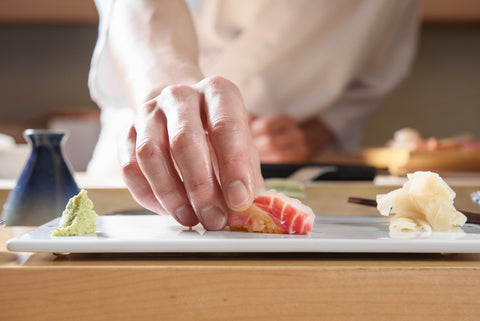
Before your first sushi meal in Japan, take some time to learn the dining etiquette. The experience will be different from what you’re used to, so you should be prepared. Here are some general sushi-eating etiquette rules in Japan:
-
You don’t have to use chopsticks. Your hands are fine.
-
Eat the whole sushi one at a time. Don’t cut it into bits or nibble on a piece.
-
Don’t mix wasabi with soy sauce or use too much wasabi.
-
Dip the fish side of nigiri sushi in sauce, not the rice side.
-
Don’t stick chopsticks vertically into a bowl of food. It’s a common practice at funerals and has no place in a sushi restaurant.
-
Don’t know what to order? Simply say “omakase,” which means, “I leave it up to you.” You’re telling the chef to make the choice for you.
-
An omakase set contains 7 to 10 different sushi pieces, which will be offered to you one at a time. Don’t leave a fresh piece for too long without eating it.
-
If you like any of the pieces, feel free to request a repeat.
-
Mention to the chef any allergies or food preferences you have. They have recipes for different situations, including vegetarian sushi.
Discovering Hidden Gems: Must-Visit Sushi Restaurants in Japan
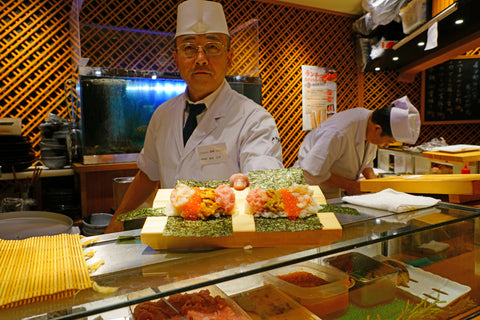
With over 30,000 sushi restaurants in Japan, you can feel overwhelmed when trying to pick the right place to enjoy the dish. Here are 5 must-visit Japanese sushi restaurants and their locations:
-
Harutaka (Ginza, Tokyo): Great for lovers of intricate sushi textures and flavors.
-
Sushidokoro Amano (Osaka, Osaka): The best place to eat sushi and learn about the popular fish sources in Japan.
-
Sushi Kobikicho Tomoki (Ginza, Tokyo): Best for a personalized experience.
-
Sushi Harasho (Nanba, Osaka): Ideal for lovers of good food and a lively environment.
-
Kyoto Saeki (Kyoto, Kyoto): Enjoy sushi with the view of a stunning landscape.
From Classic to Creative: Exploring the World of Sushi Rolls

Sushi roll is the only type of sushi to rival nigiri sushi in terms of global popularity. It has been largely accepted by Western countries, especially the United States. The California roll is the most famous example. It’s a maki sushi roll made with crab meat, cucumber, and avocado. Other popular types of sushi rolls include: spider roll, ikura roll, spicy tuna roll, shrimp tempura roll, unagi roll, iwashi roll, and saba roll.
Bringing Japan Home: Recreating the Sushi Experience with Bokksu Snack Box
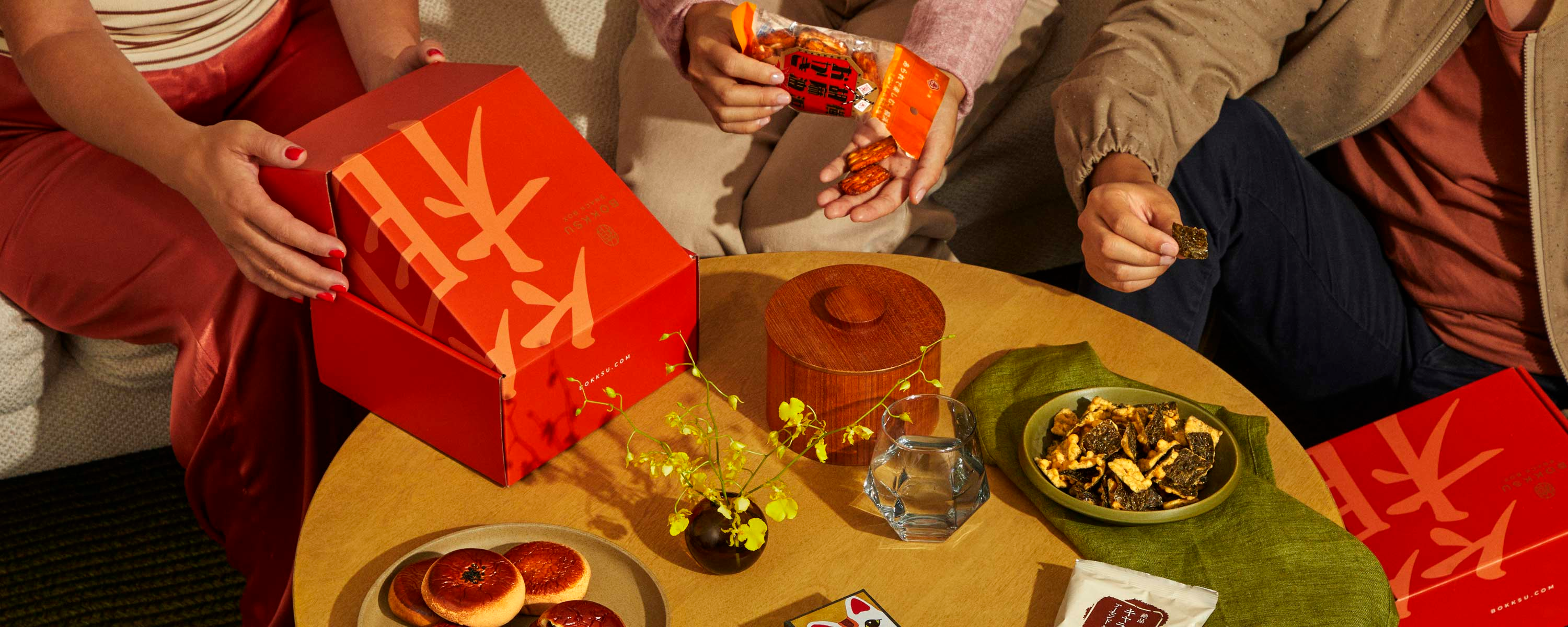
Hungry for a taste of authentic Japanese sushi flavors but can’t make the trip? Subscribe to the Bokksu Snack Box and get a monthly supply of Japanese snacks and treats, including sushi-inspired flavors. We offer a unique way for you to experience the essence of Japan's culinary heritage with an modern approach from the comfort of your home. Every box contains dozens of carefully curated, premium treats sourced from authentic establishments in Japan.
Satisfy your curiosity and taste buds by subscribing today!
Author Bio







